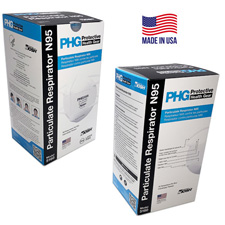| The Home page of ILPI's Safety Data Sheet (SDS) Resource, the leader in SDS information since 1995! | |
| The history and philosophy behind this resource. | |
| A curated collection of books and reference materials concerning Safety Data Sheets and closely related topics. | |
| Paste your plain text SDS into the SDS-Demystifier, and it will be converted into a hypertext-enriched document with links to detailed explanations of each key term. | |
| An extensive list of frequently asked questions about Safety Data Sheets including regulations, content, compliance, and more. | |
| A humorous take on Safety Data Sheet jargon. Fill in the blanks on our entry form to generate a personalized Unsafety Data Sheet to share with your coworkers. | |
| Since 1995, we've maintained this massive curated list of the best places to find Safety Data Sheets on the Internet. | |
| You are here! Way more than a glossary, this hypertext-enhanced resource covers hundreds of SDS-related terms and expert knowledge. Each entry includes both the SDS relevance and links to additional authoritative resources. | |
| Archived results of Safety Data Sheet related polls taken by some of our millions of site visitors | |
| The OSHA regulations behind SDS regulations, including the inspection guidelines and over 400 official interpretations letters under the Hazard Communication Standard | |
| Commercial suppliers of SDS authoring and management software as well as cloud compliance services. | |
| Commercial companies that will create SDS's for your specific needs as well as SDS translation companies. |

Safety signs, banners, and scoreboards? Get yours at Safety Emporium!

Prevent back spasms and other workplace injuries with ergonomic signs like this one from Safety Emporium.
Definition
A spasm is an abnormal involuntary muscle contraction such as a twitch or cramp that is accompanied by pain and/or interference with normal function. Cramp-like spasms of muscles are called tetany.
Additional Info
Spasms can have a number of causes. For example, back pain and spasms can be caused by a strain, sprain or injury. Other spasms can be caused by pinched nerves, for example, a hemifacial spasm (one affecting one side of the face only) is caused when an artery presses on one of the facial nerves that controls the muscles on that side of the face.
The science of ergonomics looks at the relationship of man and his work, incorporating the anatomic, physiologic, and mechanical factors involved to achieve safety and efficiency. Following good ergonomic principles can avoid many common workplace injuries such as back strain, carpal tunnel syndrome, and more. See the links under Further Reading for basic ergonomic principles and more.
SDS Relevance
This term usually appears on Section 11 (toxicological information) of a Safety Data Sheet as a symptom of exposure. Exposure to certain chemicals can cause spasms or tremors. If these involve the heart, the condition can be life-threatening.
Read the Safety Data Sheets of all the chemicals used in your workplace before you use them for the first time. Know if any of them have the potential to cause spasms so you can recognize the spasm as a symptom of exposure.
Note: Before OSHA adopted the 2012 version of the Hazard Communication Standard, SDS's were formerly referred to as Material Safety Data Sheets (MSDS's). It is easy to confuse the acronym MSDS with an ergonomics term, MSD, Musculoskeletal Disorder, particularly when used in the plural form. MSD's relate to injuries caused by lifting heavy items, bending, reaching overhead, pushing and pulling heavy loads, working in awkward body postures and performing the same or similar tasks repetitively and are unlikely to appear on an SDS. Search engines are usually incapable of distinguishing between searches for MSDS vs MSD's unless additional search terms are included.
Further Reading

Get your PPE such as made in USA NIOSH-approved N95 masks from Safety Emporium.
- Coronary Artery Spasm at MedlinePlus.
- Muscle Spasm at Cleveland Clinic.
- Eyelid Spasms (Eye Twitching) at the U of Michigan Kellog Eye Center.
- Spasticity at the American Association of Neurological Surgeons.
- Muscle Cramps as well as hand or foot spasms at the NIH's MedlinePlus Medical Encyclopedia.
- OSHA's Ergonomics Resource Page.
- Ergonomics at the NIH's MedLine Plus Medical Encyclopedia.
- Work-related Musculoskeletal Disorders (WMSDs) at the Canadian Centre for Occupational Health & Safety.
- Wikipedia's entry on spasm.